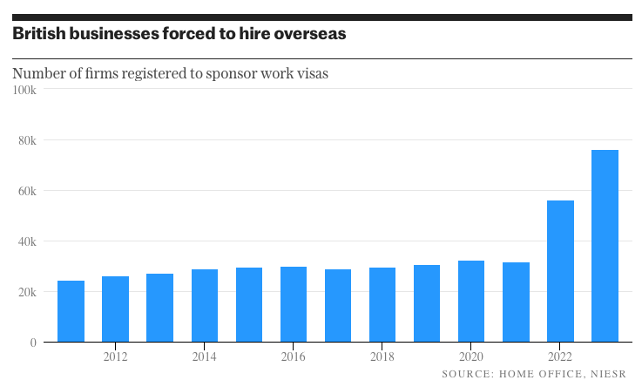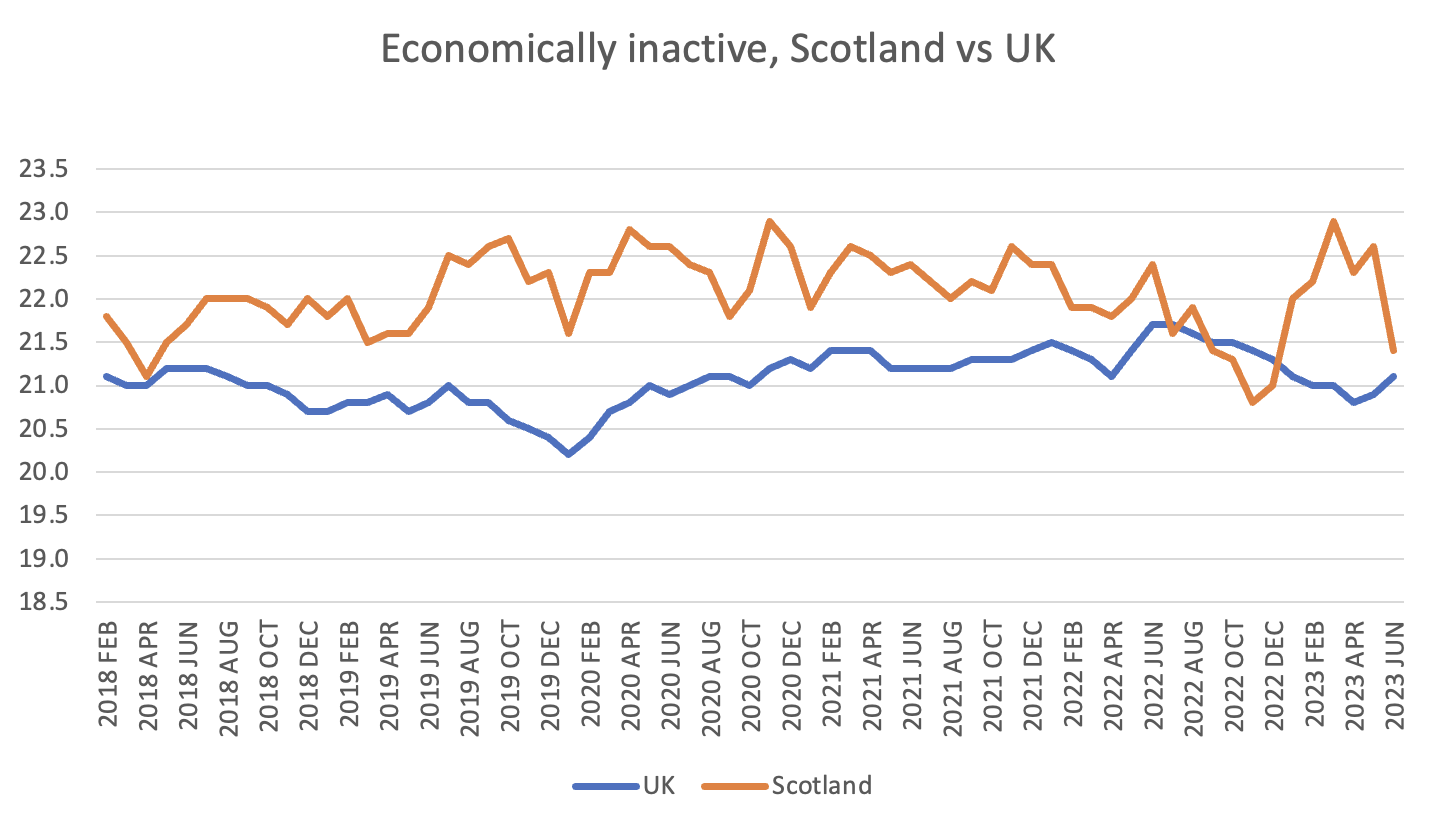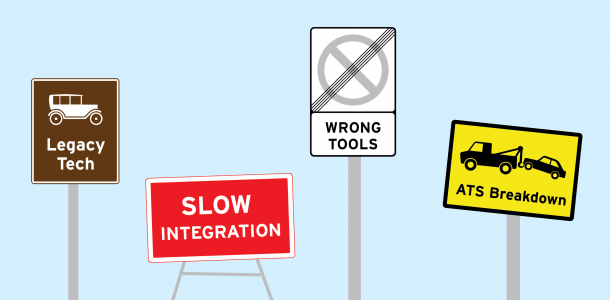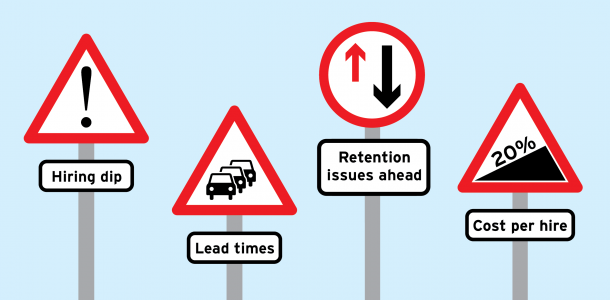Macro-level statistics and a wave of anecdotal evidence shows the recruitment market is moving into…

Employers are struggling to fill jobs. Don’t Panic Captain Mainwaring?
The recent death of Ian Lavender, the last surviving member of the principal cast characters from the much-loved Dad’s Army, brought back happy memories of watching one of British television’s all-time great sitcoms.
As with all such entertainment, the writers strove, with great success, to introduce catch-phrases which would transcend the show and pass in the everyday vocabulary of those who watched it. “We’re doomed I tell ye,” and, of course, “Don’t panic Captain Mainwaring!” were amongst these and it’s the last two that must be the most regularly deployed amongst recruiters across the country at present.
With a general election coming later this year, the politicians are, as is their wont, doing their damnedest to show themselves in a good light and their opponents in the worst possible. Debates over just how to frame employment legislation are going to play a small part in the campaigning, but one thing no party can ignore is the current state of the UK economy, the country’s demographics, social change, hugely varying attitudes amongst generations and all the other myriad elements that impact employment market. The stats do not lie… despite (as I’ll explain below) the government’s best attempts to hide some of them.
The CIPD has just issued a report telling us what we – the recruitment industry – already know: that employers are struggling to fill jobs, with 21% of firms reporting that they expect to find it difficult to hire in the next six months. This is, fortunately, an improvement on the 29% who said the same six months ago, but behind the scenes we’re seeing a wide range of factors that make it less likely than it was then for the situation to change drastically. Is it time to panic?
Normally, wage rises are sufficient to change candidate behaviour (“hey, you’re offering me twice what I’m on, when do I start?!”), but now it seems that a substantial cohort of British workers simply do not want to work on employers’ terms. The obvious solution seems to be to fill the jobs these people do not want with people from overseas, and that’s what’s happening (one fifth of NHS employees is from abroad).
Interestingly/intriguingly/worryingly (delete according to your political perspective) the inactivity rate if falling for migrants but rising for those born in the UK. This, in case you haven’t noticed, is a major political issue and, irrespective of which side you are on, it’s not going away before the election.

On top of this, we have the issue of the long-term sick, which is increasingly well-documented and, whilst principally blamed on the pandemic, seems to afflict Britain more than other European countries – and all the projections suggest it will get worse over the next few years. For me and my friends and clients in Scotland, the numbers/percentage of economically inactive (for the stats to mid 2023) do not looking very promising in contrast to the UK as a whole. It’s easy to see why some recruiters are panicking.

Against this, we have some evidence, albeit frequently anecdotal at present, that firms are taking a stronger stance against those who want to work largely from home, at least in London. This, along with the problem of how to use carrots and sticks to persuade at least some of the economically inactive to return to work, may change the employment landscape a bit, but not enough to solve the current problems in my view. That view was confirmed by the news on 13th February that the UK’s worklessness crisis is continuing to worsen. On that day, the ONS updated figures to show that nine million are economically inactive, with 1.3 million “unemployed.” However, that unemployment figure only covers those actually looking for work – of which there are, again according to official statistics, nearly one million jobs currently available. The true benefits figure goes unpublished and, appallingly, is buried in a password protected Department for Work and Pensions database. But this can be uncovered, and it shows the number claiming out-of-work benefits has hit some 5.6 million people. In some towns and cities, this means between one fifth and one quarter of people are not working.
In the battle between political/economic factors pushing people back into work and societal/age-related pressure for employers to give ground in a whole swathe of areas that, a decade or so ago, they would never have thought about for a second, it’s not hard to see the current direction of travel. The forthcoming election will doubtless reveal more of the opposing parties’ approach to all the key issues, but if you are a recruiter today, either in-house or rec-con, you’re probably not too concerned about the politics/economics surrounding the job market: all you want to do is fill jobs to the best of your ability.
Nonetheless, if you want to demonstrate to your employer/clients that you really understand what’s going on, while you obviously should not neglect your short-term goals, it’s foolhardy to ignore the bigger picture. However, I’d go further and point out to the politicians that they too should not turn a blind eye to the real-life concerns throughout TA departments the length and breadth of the country. Grandiose political schemes (which need paid for) must be thought out against the reality of recruitment on the ground. Almost all politicians will say they want to improve productivity and economic growth (otherwise how will they pay for their grandiose schemes?), yet when firms are struggling to recruit it’s hard to see where and when (short of AI taking everyone’s jobs) things are going to improve. It’s up to individual recruitment teams not to panic but to focus on the key element of their remit: to hire the best people to ensure their business/organisation is a success.



